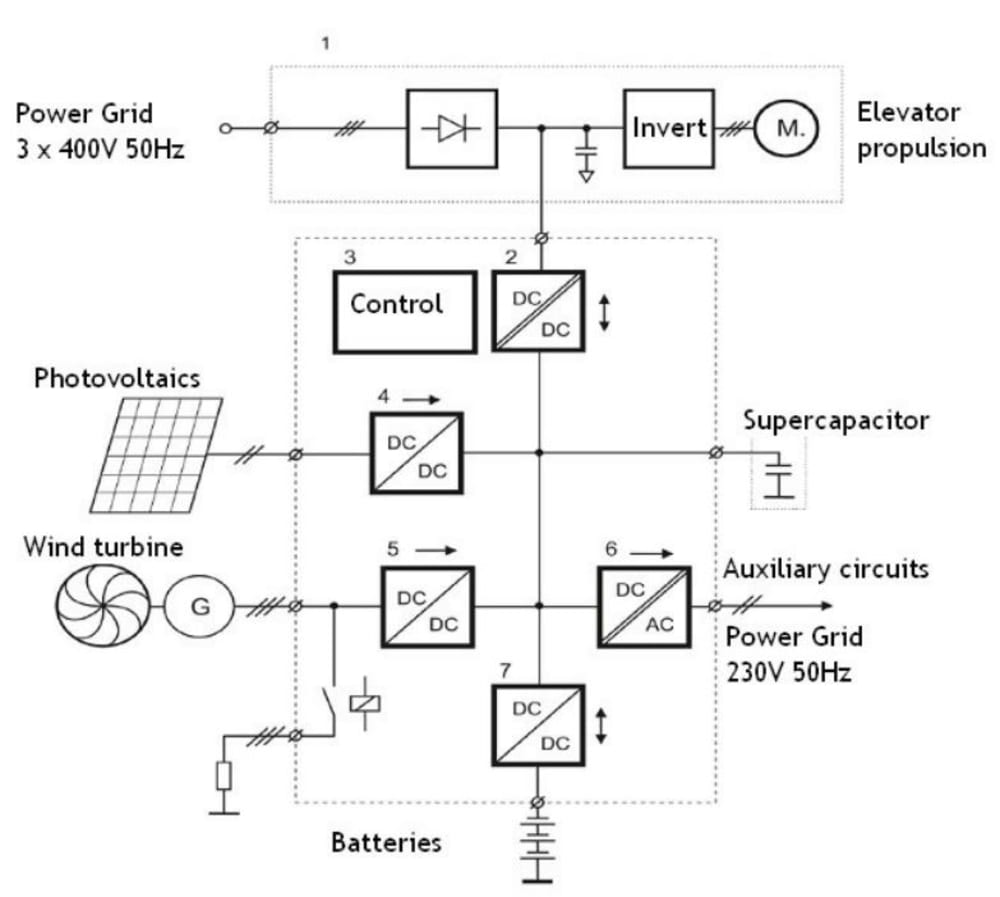The aim of the project is to show that applying additional renewable energy sources, e.g. wind turbines and photovoltaic cells, for supplying the elevator drives and auxiliary circuits (control and illumination) leads to considerable reduction of operation costs and increases the reliability.
This new solution, together with the Supercapacitor based Energy Storage Systems (SESS) providing for energy recovery at lifts/elevators, has a huge market potential. There are about 5 milion elevators in the European Union. It requires 18,4TWh of energy per year. New York City does have 65,000 elevators that the City Department of Buildings estimates make approximately 30 million trips a day.
To date, however, most building owners are unaware of this potential savings, as evidenced by the very small percentage of City buildings taking advantage of energy recovery. The estimated 10,000 elevators statewide outside of the City could benefit in a similar fashion.
Installing such SESS will result at improving the functionalities and the efficiency of conventional elevation systems.
The energy recovery is possible due using supercapacitors, which are also called ultracapacitors, DLC:Double Layer Capacitors or electrochemical capacitors. The super/ultracapacitors are energy storing devices with very big capacity, up to several thousand of farads and it allows for storing energy generated during down movement of lifts. At present the energy is lost, because it is converted to heat on resistors connected to the lift electric drive.
The energy stored at super/ultracapacitors will be used for propulsion of the lift and it will result at reduction of energy use – according to literature the reduction at the level of 40% is possible.
Several enhancements resulting from high dynamics energy storage system connected to the DC bus of an elevation system are:
1. Efficiency improvement: The SESS can be charged from the energy regenerated during the braking of the motor and it will result at significant energy saving
2. Grid peak power reduction: absorbed traction power can be partly derived from the SESS and consequently grid power peaks can be reduced.
3. Automatic rescue mode: in case of grid unavailability the stored energy can be also used for automatic rescue purposes.
It is assumed that installation of the energy recovery system will not require modification of existing system controlling the elevator trips.
The only connection of the new power supply and energy recovery system will be terminals at the DC bus of propulsion inverters.
The new power supply system can be applied for renovation of old elevator propulsion systems as well as with newly installed propulsion systems.
Applying the energy storage devices in the form of supercapacitors and batteries, together with specially designed converters able to recuperate the energy generated during “generation” journeys, allows for reaching a high level RES share in total energy balance.
The higher level of reliability will be assured by supply immunity to power grid disturbances (e.g. interruptions or sags).
The subject of the project is the device and the control method for energy redistribution in elevator systems supplied from renewable energy sources.
Like this entry?
-
About the Entrant
- Name:Tomasz Rawinski
- Type of entry:teamTeam members:Eugeniusz ?owiec, Jan Antoni Iwaszkiewicz, Jacek Perz,. Antoni Krahel, Stanis?aw Abramik
- Patent status:none

